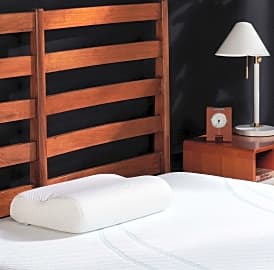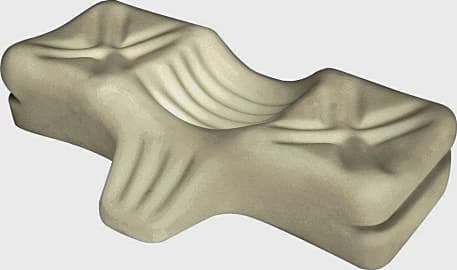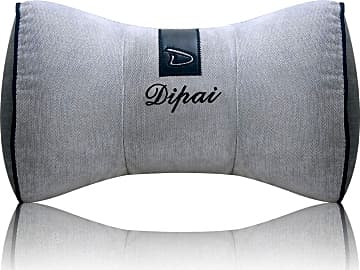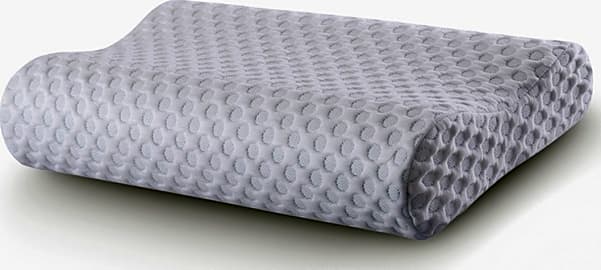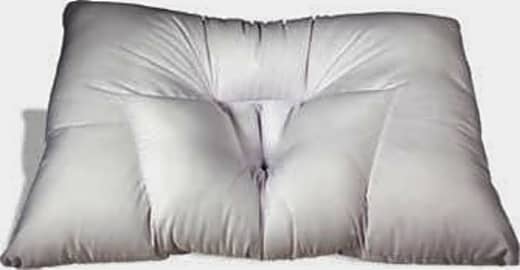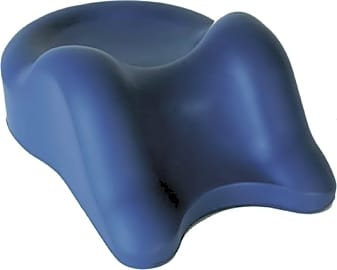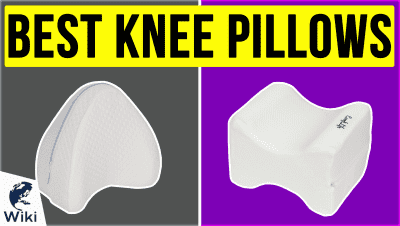The 10 Best Cervical Pillows

This wiki has been updated 39 times since it was first published in April of 2015. Sometimes, the reason you wake up feeling poorly rested is because of the angle of your neck when you sleep, and the resulting pain can ruin your whole day. Get some much-needed relief with one of these cervical pillows, which are designed to promote proper alignment. They’re available in various materials and shapes, so you’re sure to find just the right one to provide the support you require. When users buy our independently chosen editorial selections, we may earn commissions to help fund the Wiki.
Editor's Notes
February 25, 2020:
Featuring a blend of shredded memory foam and microfiber, the newly added Coop Home Goods Premium is hard to beat when it comes to adjustability. You can remove some filling as needed, and it comes with an extra half-pound bag of filler if you want a higher loft. The manufacturer also provides free customization for anyone who doesn’t feel it fits quite right. In addition, it’s backed by five-year warranty and, if after 100 nights you’re not happy with it, there is a money-back guarantee. It’s made in Los Angeles, and is hypoallergenic and resistant to dust mires.
In this updated we also added the Tempur-Pedic Firm, which uses memory foam technology to adapt to your body’s shape. In turn, it helps to foster proper alignment while you sleep. It’s available in multiple sizes, including a travel version, and features a quilted cotton cover that’s both soft and breathable, and is also removable for washing. This one also carries a five-year warranty, and is assembled in the U.S.A.
Leaving the list today are the Cradle Me and the Bedsure Memory Foam, due to issues with availability. No matter which cervical pillow sounds like a good fit for you, be sure to get approval from your doctor before you start using one to treat a medical condition.
Special Honors
Home Decorators Collection Jumbo This reliable and budget-friendly choice is known to help keep users’ necks comfortable and well positioned throughout the night -- whether they sleep on their sides or their backs. In addition, it boasts a soft, moldable texture like that of natural down, while it’s actually made from hypoallergenic polyester. It comes with a cover that features a 300-count sateen weave, and a one-inch gusset to cradle your head. It’s also got elegant blue piping along the hems, and is machine washable for easy maintenance. It’s a Good Housekeeping Seal of Approval Holder, which provides a two-year warranty. homedepot.com
Why Spine Health Is So Important
Reducing fatigue on the muscles of the spine can reduce the chances of these subluxations.
The spine is a series of vertebrae which extends from the lower back to the neck. It gives structure to the entire body and houses the spinal cord; a long bundle of nerve fibers that connect every part of the body. This connection makes up the basis of the central nervous system; which is responsible for responding to nearly all information the body receives.
Promoting a healthy spine keeps the entire body healthy. Supporting the head while sleeping is just one way to ensure the spine remains relaxed and healthy. Proper spinal support is crucial in all aspects of the body's normal functions. Any alterations, such as improper sleeping posture, can have negative effects in the central nervous system; causing distress throughout the body.
Subluxations in the spine are caused by fatigue over time, and lead to many of the common issues faced today. Lower back pain, tension headaches, and hip dysfunction are just a few common issues influenced by subluxations. Long term fatigue can lead to degenerating connective tissues, arthritic conditions, sleep disorders, poor circulation, posture problems, even foot and knee issues.
Reducing fatigue on the muscles of the spine can reduce the chances of these subluxations. When used properly, sleep provides a long period of time in which the spine can relax and heal itself from the stress of the day. This is why sleeping posture may be the most important aspect of spinal health.
Can A Cervical Pillow Make A Real Difference?
The right cervical pillow can mean the difference between being well rested and living with pain every day. It may sound drastic, but for many it is a reality. As humans spend a large portion of their lives asleep, sleeping incorrectly can spell disaster over time.
The cradle style pillow can also help to prevent snoring in back sleepers by keeping the airways aligned.
Cervical pillows are designed to ergonomically support the neck while sleeping. There are four main styles of cervical pillow, each suited to a different style of sleeper. Cradle pillows help to evenly distribute the weight of the head, effectively reducing pressure on the spine and neck. The cradle style pillow can also help to prevent snoring in back sleepers by keeping the airways aligned.
Neck pillows are generally smaller than the average pillow, and tuck behind the neck to allow for a proper spinal curve while sleeping. Neck pillows come in a wide range of sizes to fit every body type and are generally best for side sleepers or back sleepers.
Side pillows are designed with a curved edge which is higher on the side and lower in the middle. This pocket in the middle of the pillow helps to cradle the head while relaxing the upper vertebrae. The curve provides room to rest the shoulders and keeps the neck properly aligned.
The cervical roll style pillow acts as a multi-functioning device. Placed under the neck and head, it allows for proper spinal alignment. Used under the knees, cervical rolls provide support for lower back problems like sciatica. Cervical rolls can also be used behind the back while sitting for added lumbar support.
Which Sleeping Position Is Best?
Humans can fall asleep in nearly any position, but that doesn't mean they should fall asleep in these positions. In fact, sleeping posture impacts quality of sleep and can even cause back and neck problems. Stiffness, neck pains, sleep apnea, headaches, heartburn, and even premature wrinkles can be caused by poor sleeping postures.
For pregnant women, the fetal position improves circulation to the fetus, and relieves pressure on the vital organs.
Some sleeping postures are inherently bad for the body. For example, sleeping on the stomach may be good to relieve snoring, but it is actually a bad choice for sleeping. When lying on the stomach, it is hard to keep the spine in a neutral position. Stomach sleepers also risk putting unnecessary stress on their joints, ligaments, and muscles. This can lead to nerve damage, numbness, and various aches and pains. Having the head turned to the side while sleeping can also constrict the airways. This can mean less oxygen circulating in the blood which can cause headaches and fatigue come morning. It is best to simply choose another way to sleep.
The fetal position is the most popular way to sleep. Lying on the side with the torso hunched and knees bent is great in certain circumstances. For pregnant women, the fetal position improves circulation to the fetus, and relieves pressure on the vital organs. On the other hand, too tight of a fetal position can actually restrict breathing and airflow, and may cause stiffness of the joints in the morning. It is better to stretch out the torso and legs as much as possible.
Side sleeping is great for people with sleep apnea, as sleeping on the side keeps the airways open. Sleeping on the left side of the body may also reduce acid reflux by relieving pressure on the digestive system.
Though it is not the most popular position for sleep, sleeping on the back is by far the best option. Sleeping on the back allows for the spine, neck and head to rest in a neutral position. This can reduce soreness and pain, as pressure on these areas is reduced. The only downside is that sleeping on the back may influence sleep apnea.


